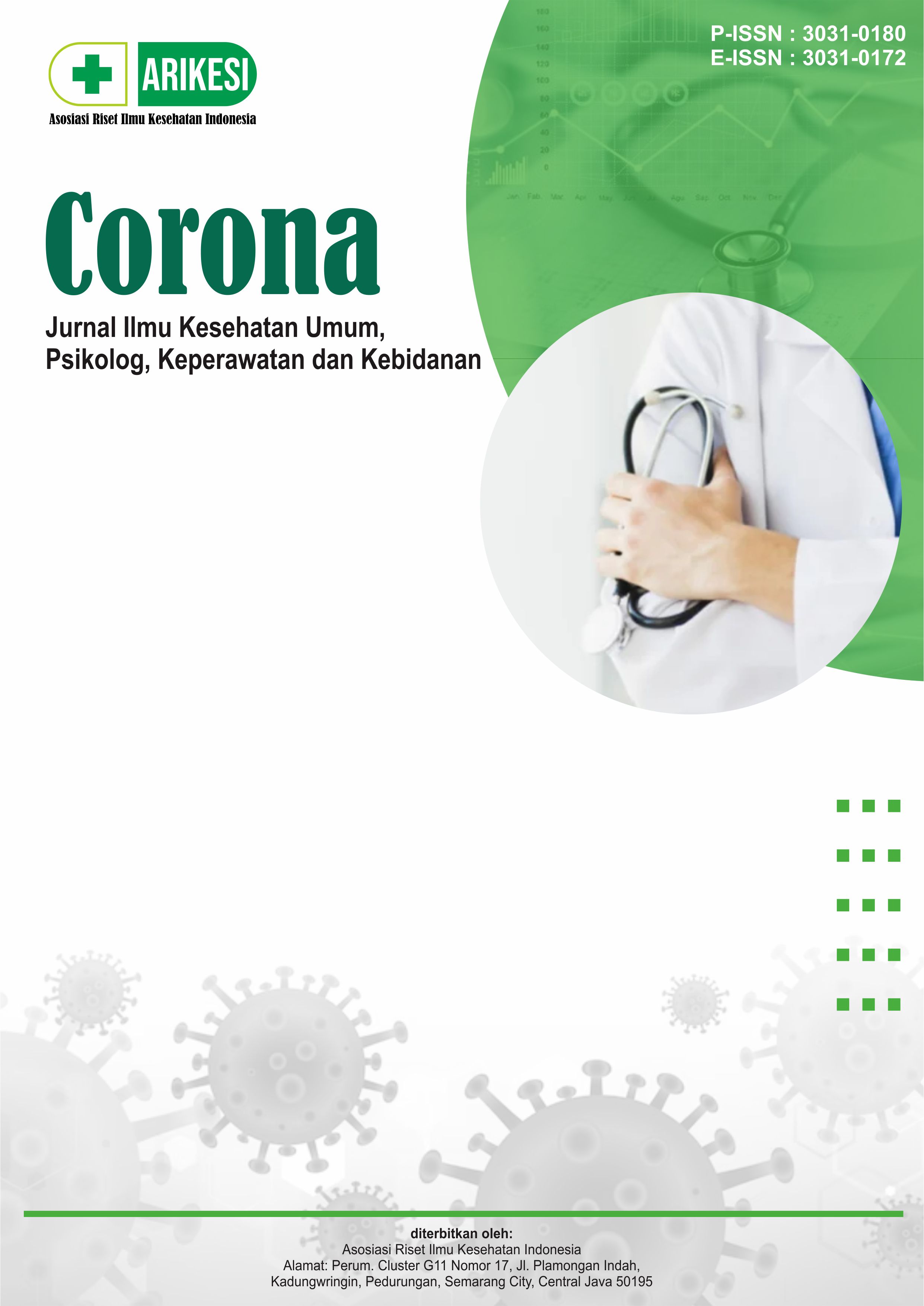Pengaruh Pijat Oksitosin Terhadap Kelancaran Produksi ASI pada Ibu Bersalin di Klinik Afisya Kabupaten Deli Serdang Provinsi Sumatera Utara Tahun 2025
DOI:
https://doi.org/10.61132/corona.v3i1.1115Keywords:
Oxytocin Massage, Facilitates Breast Milk Production, SDGsAbstract
It is hoped that breastfeeding can help achieve SDGs goal 3, target 2, namely efforts to reduce the neonatal mortality rate to at least 12 per 1000 live births in all countries by 2030 and stop unnecessary deaths of newborns and toddlers. Encouraging healthy breastfeeding is so important that it can prevent more than 820,000 deaths of children under five every year. Oxytocin massage has been shown to increase the sensation of relaxation, improve sleep quality and comfort, reduce pain and tension, and help increase prolactin and oxytocin levels, which in turn increases breast milk production.The research design uses the Pre Experimental Design method, namely in the form of a One Group pretest and posttest design without a control group. This research used purposive sampling, with a total sample of 22 respondents. Univariate and bivariate data analysis.
The results of this study showed that the value before the oxytocin massage was a mean of 16.14 and after the oxytocin massage the mean was 27.73. The conclusion of this research shows that the results of the experimental test have a significant value with a p value = 0.000 <0.05. This proves that there is a significant difference in breast milk production between before and after oxytocin massage. It is recommended that midwives at the Afisya clinic use this research as input in efforts to increase breast milk production in post partum mothers.
Downloads
References
Badan Pusat Statistik. (2024). Persentase bayi usia kurang dari 6 bulan yang mendapatkan ASI eksklusif menurut provinsi (persen). Retrieved from https://www.bps.go.id/id/statistics-table/2/MTM0MCMy/persentase-bayi-usia-kurang-dari-6-bulan-yang-mendapatkan-asi-eksklusif-menurut-provinsi--persen-.html
Cahyani. (2020). Aplikasi pemberian pijat oksitosin terhadap kelancaran ASI pada ibu post partum.
Kartini, K., Ajeng, A., & Suaningsih, F. (2020). Pengaruh pijat oksitosin terhadap peningkatan produksi ASI pada ibu post partum di Puskesmas Balaraja. Jurnal Ilmiah Keperawatan Indonesia, 3(1), 18–30.
Kementerian Kesehatan RI. (2023). Buku kesehatan ibu dan anak. Kementerian Kesehatan Republik Indonesia dan JICA (Japan International Cooperation Agency).
Lestari, L., Nurul, W., Melyana, & Admini. (2018). Peningkatan pengeluaran ASI dengan kombinasi pijat oksitosin dan teknik Marmet pada ibu post partum (literatur). Jurnal Kebidanan, 8(2).
Nadiya, S. (2020). Pengaruh pijat stimulus oksitosin terhadap let down reflek pada ibu postpartum di BPM Muaddah, S.Sit Desa Meunasah Gadong Kecamatan Kota Juang Kabupaten Bireuen. Journal of Healthcare Technology and Medicine, 6(2).
Roesli, U. (2007). Mengenal ASI eksklusif. Jakarta: Trubus Agriwidya.
Saputri, I. N., Ginting, D. Y., & Zendato, I. C. (2019). Peningkatan produksi ASI pada ibu postpartum: Experimental dengan one group pre and post test design.
Sari, R. N., Nurhanifah, T., & Jona, R. N. (2022). Efektivitas pijat oksitosin terhadap produksi ASI pada ibu nifas normal. Konferensi Nasional dan Call Paper STIKes Teglogorejo Semarang, 24-28.
Suhertusi, B. (2019). Peningkatan volume ASI dengan pemijatan oksitosin. Jurnal Ilmu Kesehatan, 4(1), 53-56.
Downloads
Published
How to Cite
Issue
Section
License
Copyright (c) 2025 Corona: Jurnal Ilmu Kesehatan Umum, Psikolog, Keperawatan dan Kebidanan

This work is licensed under a Creative Commons Attribution-ShareAlike 4.0 International License.





